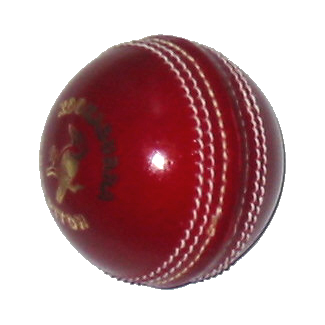If your favourite sport is cricket then one must know the how nature or you can call it science influences the game, all of us know that bowling is a major part of the game and the tricks that the bowler can play with the ball that can be secret of his success. As we all know in cricket there are two types of bowling seam bowling and spin bowling . Seam bowling can be medium fast(bowling speed less than or equal to 120 kmph) , fast medium(between 121 to 139kmph) and fast (speed above 140 kmph). While spin bowling is slow.
When it comes to seam bowling the bowler is dependent on three weapons 1) Speed 2) Swing 3) Bounce . For bowlers who are fast really fast capable of delivering over 140 kmph speed makes a big difference since the faster the bowler the less reaction time he has, also bounce makes a big difference the harder the surface and a tall bowler with high arm action can get lots of bounce that can rattle the batsman. But speed is not everything there is one weapon every seam bowler should have and that's swing now as shown in the figure below the a cricket ball comprises of two halves and right at the centre there is seam made from thread.
 |
Cricket Ball
Now if a bowler is able to make the ball land on the seam depending on the direction of the seam the ball will deviate in that direction so the ball will arrive to the batsman at the position that is different from expected. And now comes the science part there are two types of swing 1) Orthodox swing and 2) Natural swing .
1) Orthodox swing:- Orthodox swing is done with a new cricket ball the newer the ball the more it swings, swing also depends on the weather conditions and moisture content in the air and the pitch in correct conditions and depending upon the skill of the bowler the cricket ball can swing in air and the later it swings the more problems it creates for the batsmen. With a new ball the cricket ball can move in the direction in which the seam is pointed.
2) Reverse Swing:- Reverse Swing happens with an old cricket ball but is also depends on the roughness of the ground and the wicket since the precondition for Reverse swing is that one side of the cricket ball should be rough which the other side should be less rough. What players do is they keep one side of the cricket ball shiny by rubbing it with sweat on one side and let the other side get rough and its is seen that after 30 overs the ball starts moving in the direction of the shiny side it is observed that the faster the bowler the more reverse swing he gets and one particular characteristic of reverse swing is it is late so except for skilled batsmen its hard for others to negotiate that kind of bowling. There are bowlers who can finish the tail end batsmen by fast reverse swinging yorkers .
It is observed that in reverse swing when the ball dips the ball changes the direction of motion towards the shining side that can explained by the fact that the airflow across the shiny smooth side is streamline while the rough side that experiences more friction with the air , the airflow at the time of dip is turbulent which causes a slight pressure in the direction of the shiny side causing the ball to move towards it. But for reverse swing speed is a must.
Next comes spin bowling in spin bowling the bowler imparts rotational motion to the ball at the point of delivery depending on the rotational speed of the ball and how well it grips the surface when the ball pitches the ball deviates , the deviation of the ball is always in the direction of the rotational motion. The ball must pitch on the seam so as to get the turn.
In both forms of bowling the focus on bowling the ball in the correct direction is a must or else the effort will go waste
|

No comments:
Post a Comment